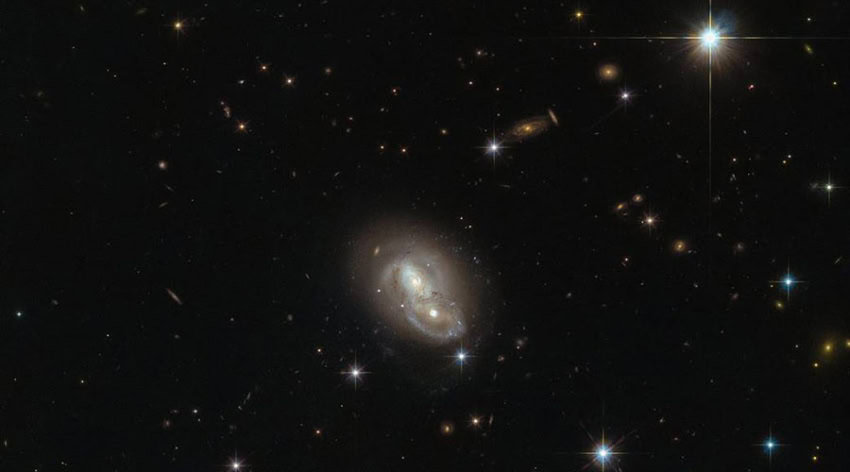WASHINGTON – The Hubble space telescope has snapped an extraordinary image of two galaxies speeding past each other at speeds of over 1.2 million miles (1.9 million km) per hour some 500 million light-years away.
The interstellar swirl, which NASA labels IRAS 06076-2139, stands out in Hubble’s image because the bright object at the center is composed of two separate galaxies seemingly on course for a head-on collision.
https://twitter.com/NASAHubble/status/863092163705491456
NASA says the great speed at which the galaxies are traveling makes it unlikely they will merge to form a single galaxy. However the ‘flyby,’ at a distance of a mere 20,000 light-years, could seriously alter both galaxies as each is likely to distort the other with the sheer force of gravity as they pass.
The intergalactic encounter was spotted in the Lepus constellation (The Hare). Such celestial crossings are regularly observed by Hubble, and the behavior of interacting galaxies can take many forms including galactic cannibalism, galaxy ‘harassment’ and even galaxy collisions.
NASA predicts that our own galaxy, the Milky Way, will eventually collide and merge with the Andromeda Galaxy in about 4.5 billion years.
https://twitter.com/chandraxray/status/863236459880468480
However, the space agency claims we shouldn’t be too concerned about the fate of our galaxy. “While galaxies are populated by billions of stars, the distances between individual stars are so large that hardly any stellar collisions will occur,” NASA explain.
Hubble marked its 27th birthday at the end of April. The telescope has helped resolve some long-standing problems in astronomy including helping to refine estimates of the age of the universe.














